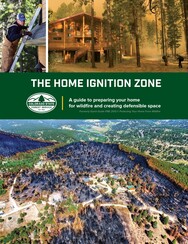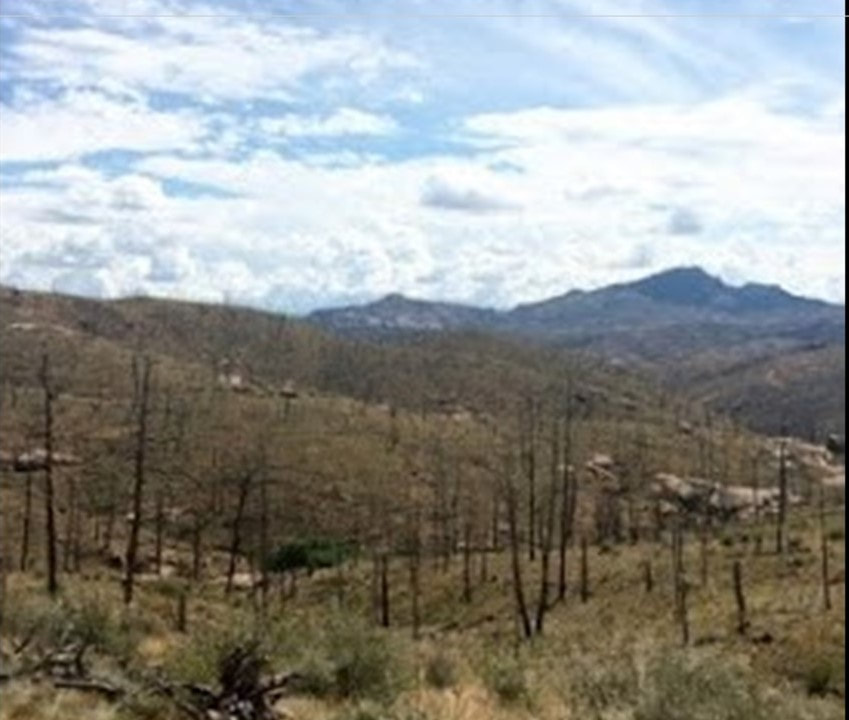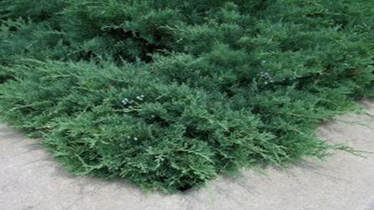Unlike lower elevations like Denver when spring planting is generally around Mother's Day, at our higher elevation you may have to wait until early June. Please check out this pamphlet from our friends at the Colorado State University Extention Forest Service. It discusses best practices for managing vegetation around your home to mitigate wildfire risk. If you are planning a garden around your home, you may want to consider using lower flammability plants. The pamphlet has a table showing plants you may want to consider with descriptions of sun/shade requirements, elevation tolerance, water needs, bloom times and the last column notes the flammability risk. Please note that a higher score denotes LOWER flammability risk with 10 being lowest risk. Even if you are not planning any plantings around your home, the pamphlet also summarizes best practices for managing trees and shrubs around your home to help mitigate wildfire risk.
A few simple actions can make a big difference in minimizing the risk of wildfire damage to your home. Below are a few tools to help get you started. Not every recommendation will be applicable or practical to your situation. If you have any questions, contact any member of our Firewise Committee and we will be happy to discuss with you. If you are interested in a comprehenisve assessment performed by a wildland fire mitigation expert, you can request a WIldfire Prepared Home Assessment from Elk Creek Fire Protection District by clicking on this link. The fee in 2022 was $100. A wildland fire mitigation expert will walk your property and home with you (takes a few hours) and then provide you with a comprehensive report to include specific recommendations for you to take to mitigate wildfire risk for your home and property.
A few simple actions can make a big difference in minimizing the risk of wildfire damage to your home. Below are a few tools to help get you started. Not every recommendation will be applicable or practical to your situation. If you have any questions, contact any member of our Firewise Committee and we will be happy to discuss with you. If you are interested in a comprehenisve assessment performed by a wildland fire mitigation expert, you can request a WIldfire Prepared Home Assessment from Elk Creek Fire Protection District by clicking on this link. The fee in 2022 was $100. A wildland fire mitigation expert will walk your property and home with you (takes a few hours) and then provide you with a comprehensive report to include specific recommendations for you to take to mitigate wildfire risk for your home and property.
The Home Ignition ZonePublished by the Colorado State Forest Service this document is a comprehensive yet succinct guide for forest management and landscaping for fire mitigation around your home. A must read resource. Click on the link below to learn more.
|
Jefferson Conservation District
Click on the link below to learn about Jefferson Conservation District and a little about forest ecology 101 and how we got to the point of more frequent catastrophic wildfires compared to 100 years ago. What can we do?
|
Wildfire Home Retrofit GuideThis guide contains specific recommendations for retrofitting existing components of a home to better withstand wildfre. Each section contains an explanation of how the component is vulnerable to wildfire and what can be done to improve that component.
|
Trimming tree branches to 10 feet above the ground and removing all mulch from around your home are relatively easy and high-value ways to mitigate wildfire risk to your home. Click here to see a short video showing how firefighters protect a home during a wildfire. Watch to the end and appreciate how trimming tree branches up to 10 feet helps prevent a grass fire from becoming an out-of-control wildfire, and also learn why mulching around your home is a bad idea. |
Another high-value action you can take is eradicating juniper from your property. Junipers are not an appropriate choice for a fire-resistant landscape. In a fire, these plants provide ample fuel for fast-spreading flames. Junipers have lacy, evergreen foliage which burns quickly because of its texture. They also contain flammable volatile oils, identifiable by their strong odor and sticky sap. Junipers frequently have dry or dead wood and leaves. All these elements create a virtual tinder box for a potential fire. Firefighters refer to juniper as "green gasoline". Eliminate juniper from around your house and also from bases of trees to help prevent a fire from creeping up into the crown of the tree. |




